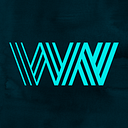Agile toolkit: use user story mapping to define, prioritise and build better digital products
Introduction
I’ve talked in the past about a technique called Impact Mapping. Impact mapping is a useful decision making tool which can work well with a lean startup approach when figuring out what experiment to run next. However, it can be a difficult technique to use when starting with a completely blank canvas such as beginning a new project where there’s no existing product to use as a frame of reference. In fact, the impact mapping book only covers examples where a product already exists and impact mapping is used to determine what to do next to have the greatest impact on achieving a given goal (the classic example being getting more people to sign up to a particular service).
So how do we get to the point where impact mapping can be used effectively? How can we get inside our customers’ heads to describe a service / product through their eyes?
Story mapping
For those of you with children of school age, at least those aged 5–11, you may be familiar with the term ‘story map’. Story mapping is a technique children are taught to help them with their creative writing. It’s a way to visually describe a story through a set of linked events, helping children to focus on the narrative (the all important bit about story telling) without getting bogged down with the detail (the writing). Once a story map has been created, the child can get down to the business of writing with a framework for their story already in place. It’s really useful because it enables a child to focus on the story without being waylaid by the implementation. It’s VERY difficult for children to write detail whilst also thinking ahead and so without the framework things can get lost and the narrative suffers (more often than not the story is never completed).
I assume that Jeff Patton was familiar with the concepts of the story mapping technique used in schools but maybe that’s just coincidence. Either way, user story mapping is similar technique that can help us to document software and create a cohesive story without having to focus on too much detail. Or rather, help us tell a story through the eyes of our customers. And the resultant document — the user story map — helps create a shared understanding of the software, no matter who you are (client, designer, developer, customer etc). It achieves all of this by allowing us to create these stories from an end users’ perspective. Here’s a small exert from Jeff’s book about how he frames the discussion (and this is pretty much how we start every session too):
“OK, let’s imagine the future. Let’s assume for a minute this product is live and let’s talk about a day in the life of someone who uses it and start telling the story. First they would do this, and then this, and so on and so on”
Jeff Patton
There are a number of other benefits from using the user story mapping technique and it fits especially well if you’re using Agile or Lean methods to deliver your software. A user story map can be used to:
- Represent your backlog in a non-flat way
- Prioritise outcomes over features
- Recognise holes in your software narrative
- Plan a release roadmap
- Identify a minimum viable product
- (dare I say it) help estimate
Conclusion
User story mapping is a really valuable tool for software development; a way to create a cohesive, shared understanding of a product through the eyes of your end users. I’d go as far as to say it’s one of the most powerful tools in our toolkit and I’d highly recommend it to anyone involved in creating software (of any kind).
If this has piqued your interest then I’d recommend getting the book User Story Mapping: Discover the Whole Story, Build the Right Product by Jeff Patton and then trying it out the next time you start the process of defining a product.
